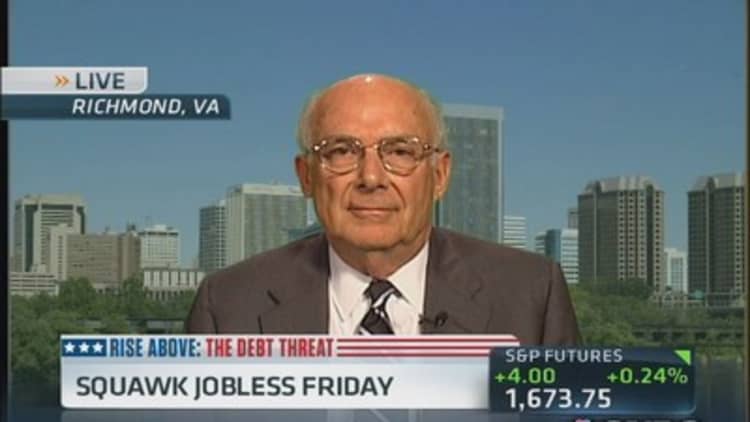The biggest news this week revolves around the debt ceiling, deficits and defaults. However, this discussion seems to breed rampant confusion.
Our financially incompetent government has met the financially illiterate public—and in many cases the financially illiterate media too—to spread myths, lies and misunderstanding as far as the eye can see regarding the ongoing U.S. debt issues. Here's what's real- and what's not- in the government debt narrative.
Debt is not the only method to finance overspending
When our government spends more money than it takes in, as it has been doing both consistently and at an accelerating pace for the past 30 years, it has to find a way to pay for that overspending.
As any individual or business knows, there are choices you face when you need more money than you have at hand. You have to find a way to bring in more capital through making more money, selling some assets or securing financing.
That's the same decision the U.S. government faces as well. While raising taxes is an unattractive option given our already slow growth environment, plus the rampant government waste and mismanagement, the U.S. has plenty of assets that it could sell or lease in order to raise money to pay for overspending.
(Read more: Wall Street gets ready to trade defaulted US debt)
For some reason, the option of utilizing our assets is never legitimately discussed.The default choice for the government for the past three decades has been borrowing to pay for its overspending.
Because of that, over the last dozen year we've added more than $11 trillion in debt, creating the current balance of approximately $17 trillion that we owe and leaving us paying far too much of every dollar for past spending in the form of interest expense (approximately 9% for FY 2013).
In layman's terms, we are paying more and more of every tax dollar to finance past overspending instead of for investing in our future. Debt cannot be used as a continual financing solution without dire consequences.

Failure to raise debt ceiling doesn't mean default
Somehow, the media and political narrative has been that if we don't raise the debt ceiling we will default on our debt. It's a convenient and scary cause-and-effect scenario. The problem is that it's blatantly untrue as well.
Failure to, or postponement of, raising the U.S. debt ceiling means that the government has exhausted all of its borrowing options and it cannot legally borrow any more money (a provision that would have been prudent to enforce long ago).
(Read more: Obama expects Congress will raise debt cap)
This means that without debt financing available, whether that be temporarily or indefinitely, the government needs to make some choices.Those choices include raising money in other ways (as I discussed above, perhaps through utilizing its vast assets), postponing payment of some of its obligations or forgoing some of its authorized spending.
The government does have cash flow coming in every month, so the only way the U.S. defaults on its debt is if it chooses not to pursue additional revenue collection and/or does not use the money it has available to make its debt payments (any interest and principal due).
Failure to raise the debt ceiling forces the government to have to make choices, but only their own prioritization of payments would cause an actual default.
Our credit rating is threatened by much more than a default
Putting the general late-to-the-game analysis of the credit rating agencies aside, a default would absolutely threaten the U.S.'s credit rating, which would in turn make it more expensive for us to borrow in the future.
However, a default is hardly the only threat to our credit standing. We lost our AAA credit rating for the first time ever from S&P in 2011 based not on a default (which was threatened but never happened), but instead on our overall accumulation of debt, lack of a credible plan to reduce it and overall problematic policymaking governance.
(Read more: Moody's CEO: US default 'extremely unlikely')
All of those issues have gotten worse. We have more debt than two years ago and there has been no improvement in our political disaccord, the financial savvy of our lawmakers, or in our governance in general.
While we certainly don't want to compromise our future financial flexibility, we also need to get a grip on the situation that our ballooning debt, lack of financial accountability and imbalanced budgets have put us in. We are dangerously close to having said situation spiral entirely out of control.
Honesty is the best- and only- policy
Certainly growth is our best path to prosperity, as it will bring in more revenue to address spending and debt repayment.
But in the meantime, we cannot solve our real issues around debt if we aren't honest about them or if there's rampant misunderstanding of them. We need to have a dialogue based on the reality of the situation and put pressure on our lawmakers to act responsibly instead of politically.
Carol Roth is a CNBC Contributor, a 'recovering' investment banker and bestselling author of The Entrepreneur Equation. Follow her on Twitter: @CarolJSRoth

